Key takeaways
- Understanding drone photography involves mastering flight, camera settings, safety, and legal regulations for creative and responsible use.
- Key features for landscape drones include high camera resolution, substantial flight time, and advanced stabilization to capture sharp images.
- Preparation is crucial; scouting locations, ensuring equipment readiness, and planning flight paths enhance the shooting experience.
- Techniques like varying flight patterns, using manual controls, and incorporating natural leading lines lead to more dynamic compositions.
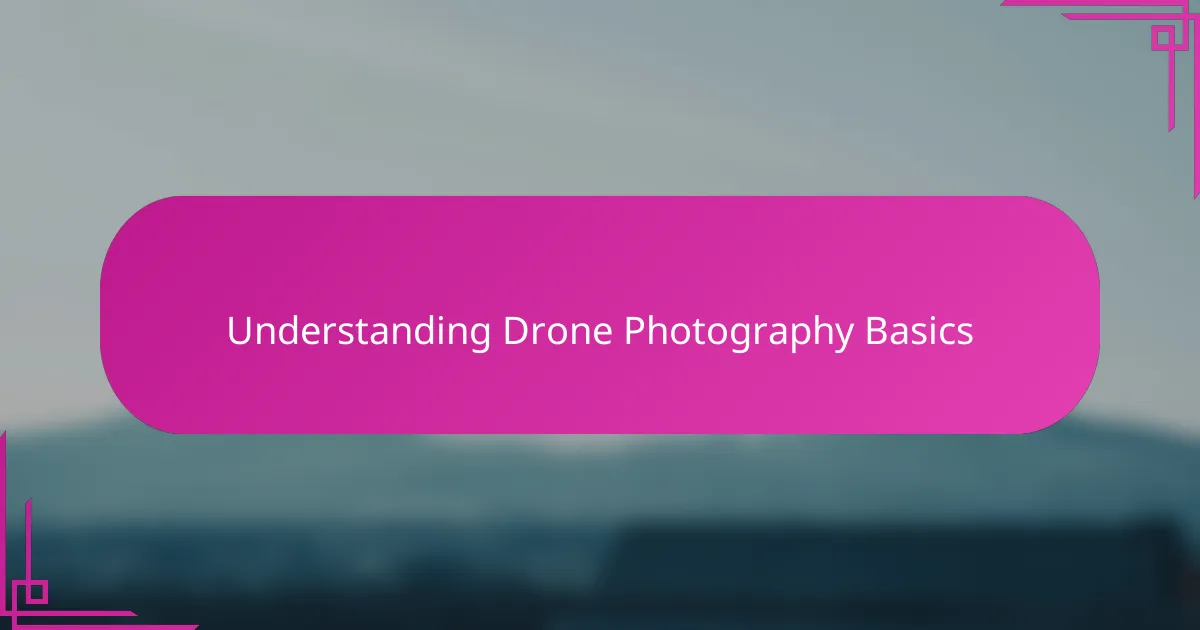
Understanding Drone Photography Basics
Getting to grips with drone photography means understanding not just how to fly the drone, but how to use its camera effectively. I remember my first flight — the sensation of controlling the drone while framing a shot from above felt like discovering a whole new perspective. Have you ever thought about how altitude changes the story your image tells?
It’s also crucial to know the basic settings like shutter speed, aperture, and ISO, but applied from an aerial viewpoint. Learning how these settings react when shooting from the sky helped me capture sharp, vibrant landscapes, even when conditions were far from perfect. Does adjusting these remind you of traditional photography, or does it feel like a whole new game?
Finally, safety and legal considerations form the foundation of responsible drone use. In my experience, respecting no-fly zones and understanding local regulations not only kept me out of trouble but also allowed me to focus on creativity without stress. Have you checked what’s allowed where you want to fly?
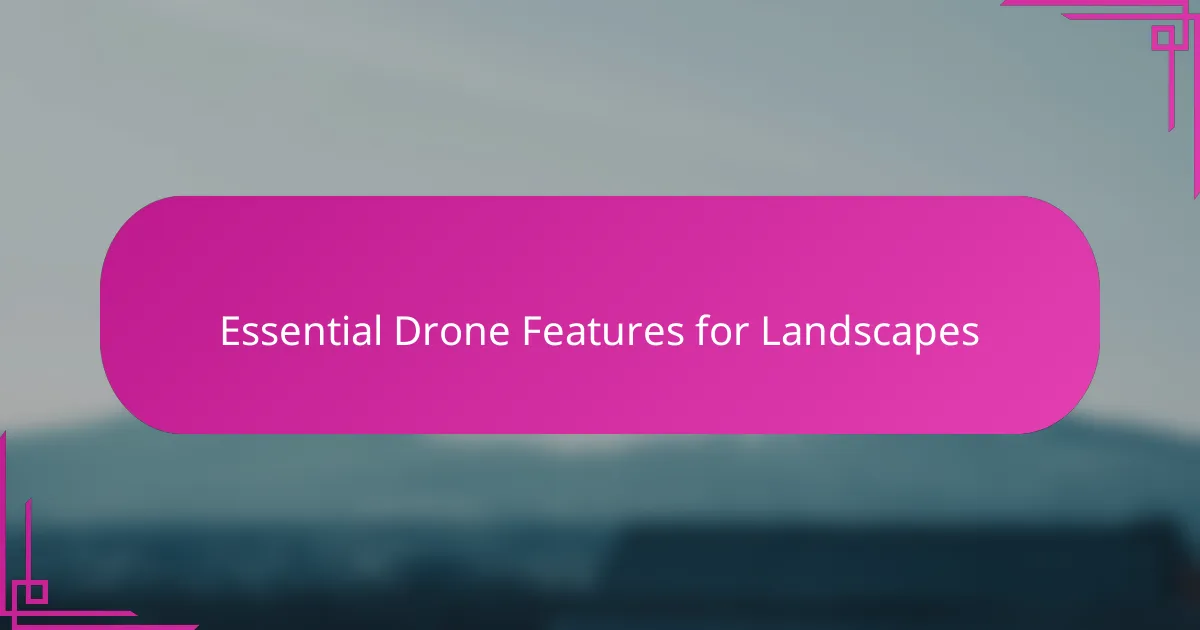
Essential Drone Features for Landscapes
When I first chose a drone for landscape photography, one feature stood out immediately: camera resolution. Capturing the fine details of vast terrains makes a high-quality sensor non-negotiable in my book. Have you ever zoomed into a drone shot and felt disappointed by the lack of clarity? That’s when you realize how crucial this feature really is.
Another aspect I quickly learned to prioritize was flight time. There’s nothing more frustrating than reaching an incredible vantage point only to have the battery warning flash on your screen. From my experience, a drone with at least 20 to 30 minutes of reliable flight time gives enough space to explore and capture varied angles without constant interruptions.
Stability and GPS precision are equally indispensable. I remember battling strong winds on a cliffside shoot — drones with advanced stabilization and accurate positioning saved my shots from becoming blurry messes. Don’t you want a drone that holds its ground so you can focus on creativity instead of constant corrections?
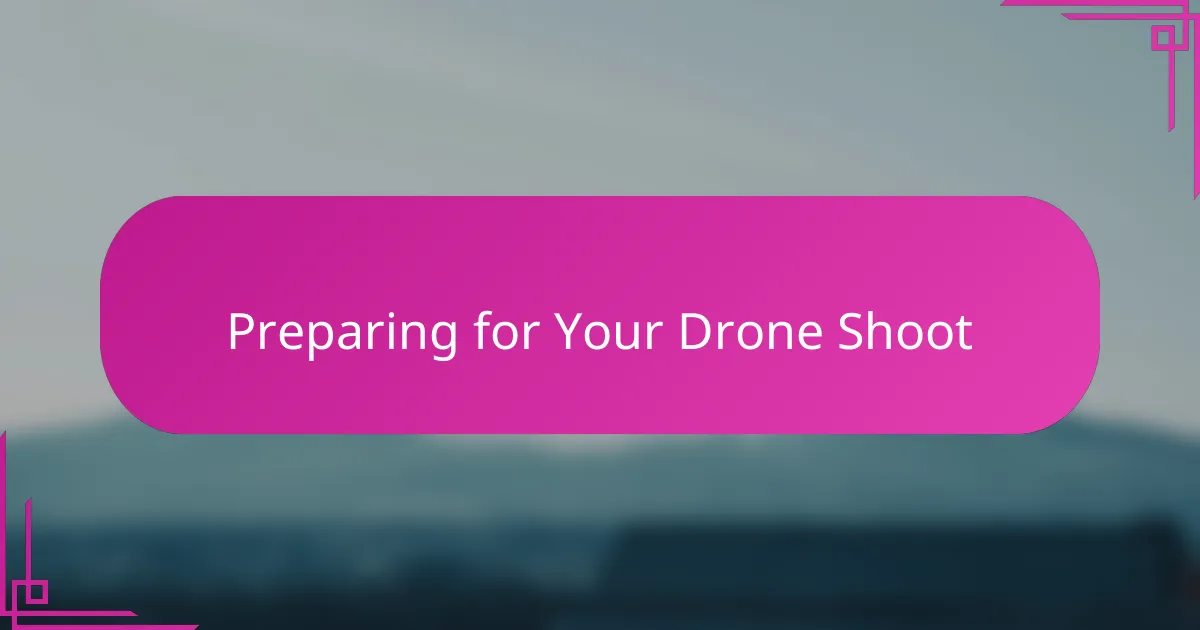
Preparing for Your Drone Shoot
Preparing for a drone shoot always starts with scouting the location beforehand. I like to study maps and recent weather conditions to anticipate any challenges. Have you ever arrived at a spot excited to shoot, only to find the light was all wrong or the winds too strong? That kind of prep saves me from frustration and wasted flights.
Next, I make sure my drone is in top shape — batteries fully charged, propellers checked, and memory cards cleared. There was this one time I almost missed a golden hour moment because I forgot to charge a spare battery. That taught me the hard way how crucial it is to prepare gear meticulously.
Finally, setting up my flight plan in advance gives me peace of mind. I use apps to mark launch points and no-fly zones, so I can focus purely on capturing stunning compositions. Do you plan your flights in detail, or prefer spontaneous exploration? I’ve found a mix works best but having a plan keeps me confident and creative in the field.
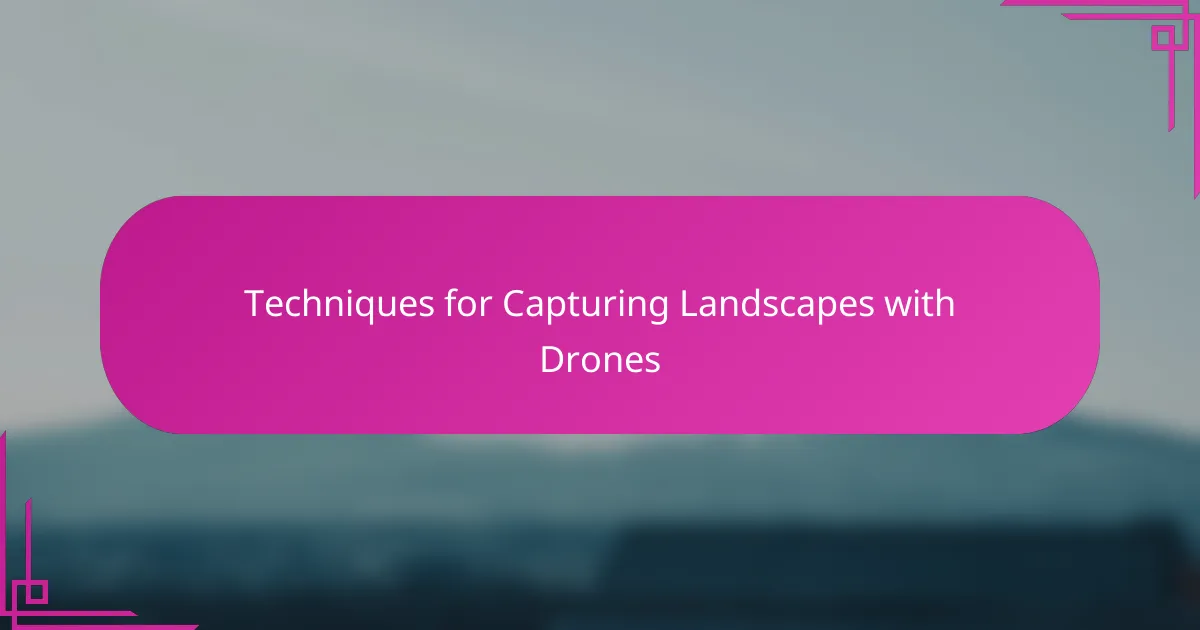
Techniques for Capturing Landscapes with Drones
When I started exploring techniques for shooting landscapes with drones, I quickly realized the power of mastering different flight patterns. Circling a focal point or sweeping slowly over ridges created dynamic perspectives that transformed ordinary scenes into cinematic vistas. Have you tried varying your drone’s path to breathe life into static landscapes?
Using manual camera controls while in flight adds another layer of creativity. Adjusting exposure mid-flight, especially during changing light conditions like sunrise or sunset, lets you capture rich textures and balanced contrasts that automatic settings often miss. I’ve found that hands-on control keeps me connected to the scene, almost like painting with light from above.
One trick I swear by is planning shots that incorporate natural leading lines—rivers, roads, or tree rows—directing the viewer’s eye through the frame. From a drone’s vantage point, these elements become powerful compositional tools that ground the vastness of a landscape. Have you noticed how perspective changes when you shoot from 100 feet up? It’s like seeing the earth’s narrative unfold before your eyes.
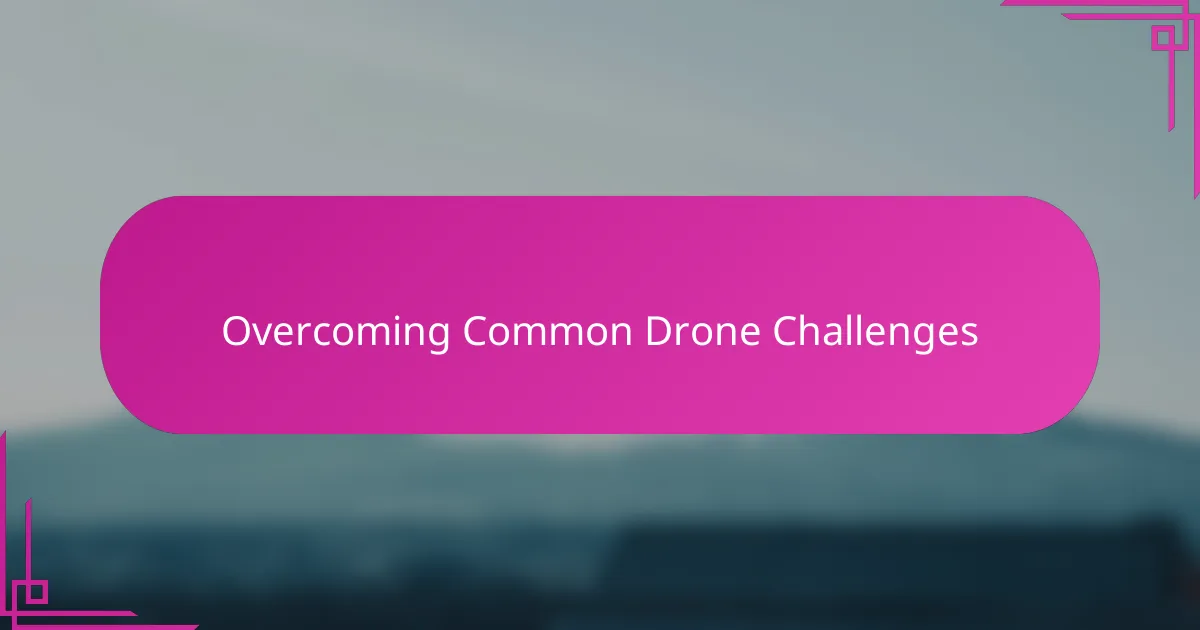
Overcoming Common Drone Challenges
Drone signal loss used to stress me out during shoots, especially in remote areas. But over time, I learned to pre-check signal strength and avoid obstacles like dense trees or tall buildings that interfere with connectivity. Have you ever felt that sudden panic when your drone drifts out of range? Staying vigilant about surroundings has saved me countless headaches.
Battery life is another challenge that can quickly derail a session. Early on, I underestimated how fast the power drains in cold or windy conditions. Now, I always carry extra batteries and monitor power closely, giving me the freedom to focus on composition instead of rationing flight time. Do you keep spares ready, or have you had to cut a shoot short unexpectedly?
Wind is a constant foe for drone photographers, shaking stability and blurring shots. I remember one blustery morning when my drone barely held altitude, and every frame looked shaky. Choosing a drone with strong stabilization and flying during calmer hours made all the difference. Have you faced the frustration of battling wind, only to realize a better time—or gear—would solve it?
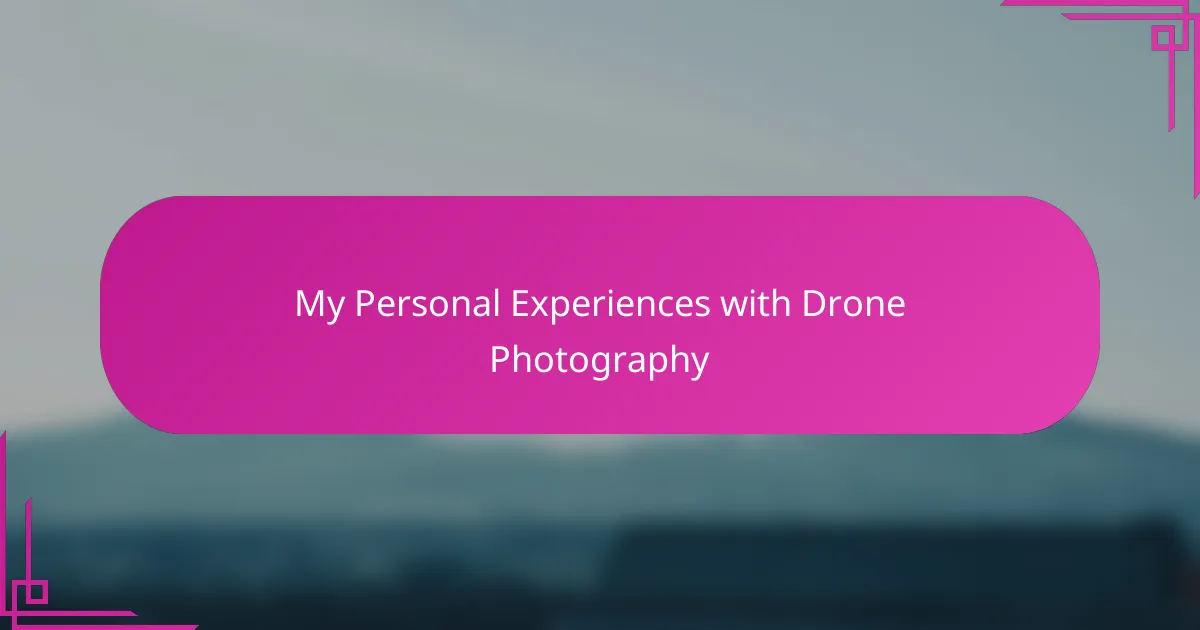
My Personal Experiences with Drone Photography
Flying my drone for landscape shots quickly became more than just a technical exercise—it turned into a new way of seeing the world. I recall a trip to a rugged coastline where the drone hovered silently above, revealing patterns in the waves and cliffs I never noticed from the ground. Have you ever experienced that moment when the view from above completely changes your connection to a place?
There were definitely moments of trial and error too. Once, I misjudged the wind speed and had to hastily navigate the drone back just before it was about to drift over a restricted area. That adrenaline rush taught me to respect the power of nature—and to plan my flights more cautiously. Do you find that the unpredictability of drone flying adds a bit of excitement to your shoots?
Beyond the technical challenges, what surprised me most was how patient drone photography makes you. Waiting for the perfect light to hit a mountaintop, watching shadows lengthen from an aerial viewpoint, felt almost meditative. In those quiet moments, I realized that drone photography isn’t just about pictures—it’s about experiencing landscapes in a deeper way. Have you noticed how the patience required changes your approach to photography altogether?
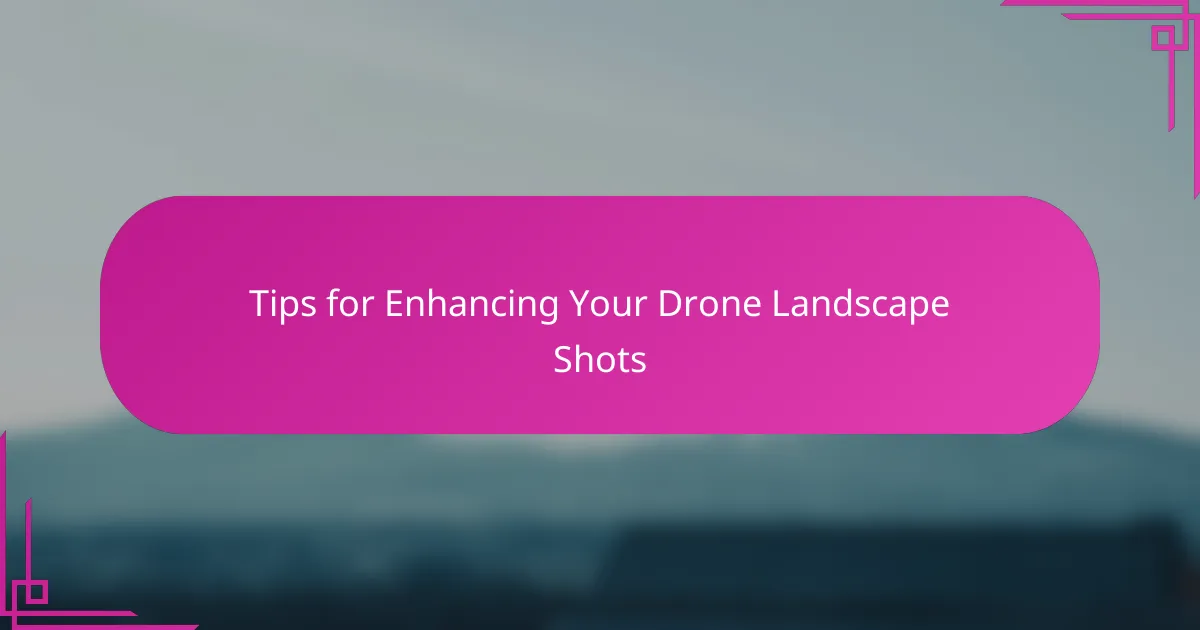
Tips for Enhancing Your Drone Landscape Shots
One tip that transformed my drone landscape shots was learning to use the golden hour to its fullest. Shooting just after sunrise or before sunset bathes the scene in soft, warm light that adds depth and mood to even the simplest landscapes. Have you noticed how this time of day can turn a flat image into something truly magical?
I also discovered the power of experimenting with angles and altitudes. Flying lower offers more detail and texture, while higher elevations reveal sweeping vistas and context. Balancing these perspectives keeps your portfolio dynamic and rich. When was the last time you purposely varied your drone’s height to unlock a new viewpoint?
Lastly, post-processing can’t be overlooked. I often enhance colors and contrasts subtly to bring out the natural beauty without overdoing it. It’s a fine line between enhancement and authenticity, so how do you approach editing to keep your shots feeling true to the landscape’s spirit? Trying different presets or manual tweaks can be a game changer for those striking drone photos.